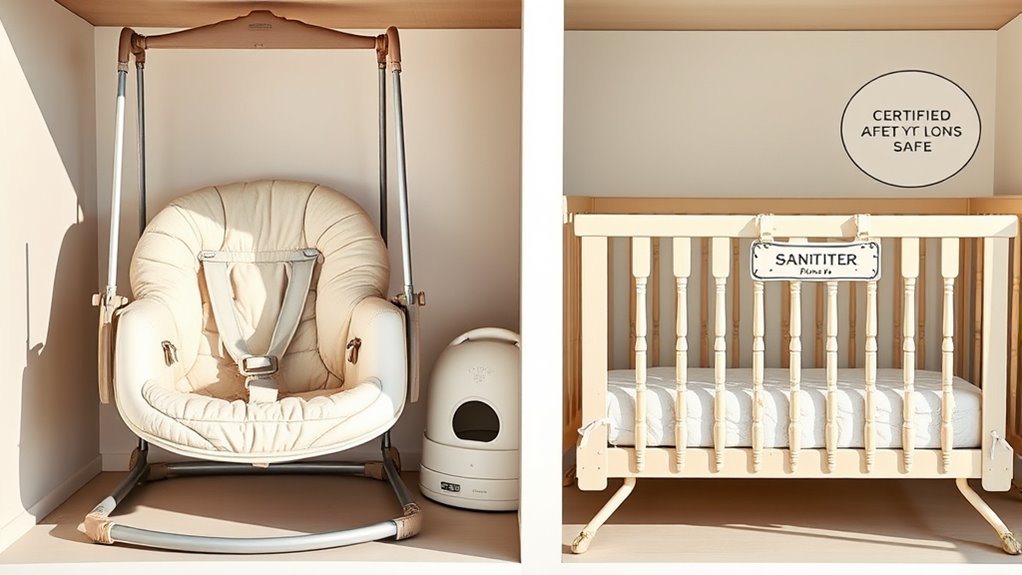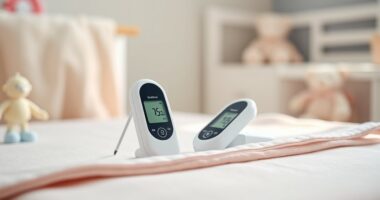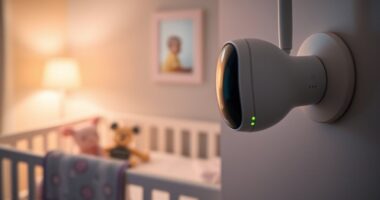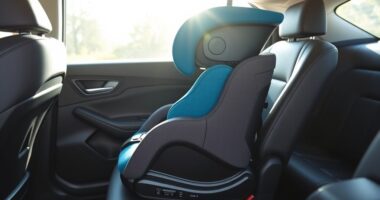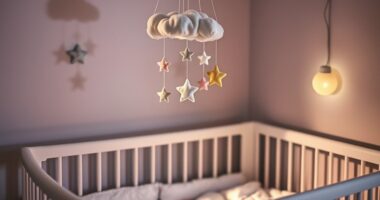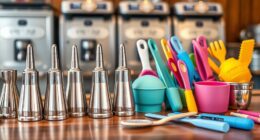When buying second-hand baby gear, always inspect items thoroughly for damage, rust, or missing parts, and confirm they meet current safety standards. Clean and disinfect all surfaces, focusing on high-touch areas, and verify that the gear isn’t recalled or expired. Avoid worn or questionable items, and prioritize safe, high-quality options. If you keep these tips in mind, you’ll be better prepared to choose safe gear—more helpful tips await as you continue.
Key Takeaways
- Thoroughly inspect second-hand gear for damage, missing parts, and ensure it meets current safety standards.
- Clean and disinfect all surfaces, emphasizing high-touch areas, and discard items that cannot be properly sanitized.
- Check for recalls and verify that the equipment complies with up-to-date safety regulations.
- Confirm the age and expiry date; avoid using outdated or expired baby gear.
- Prioritize safety by choosing gear in good condition, avoiding worn or damaged items, and considering new or certified products when unsure.
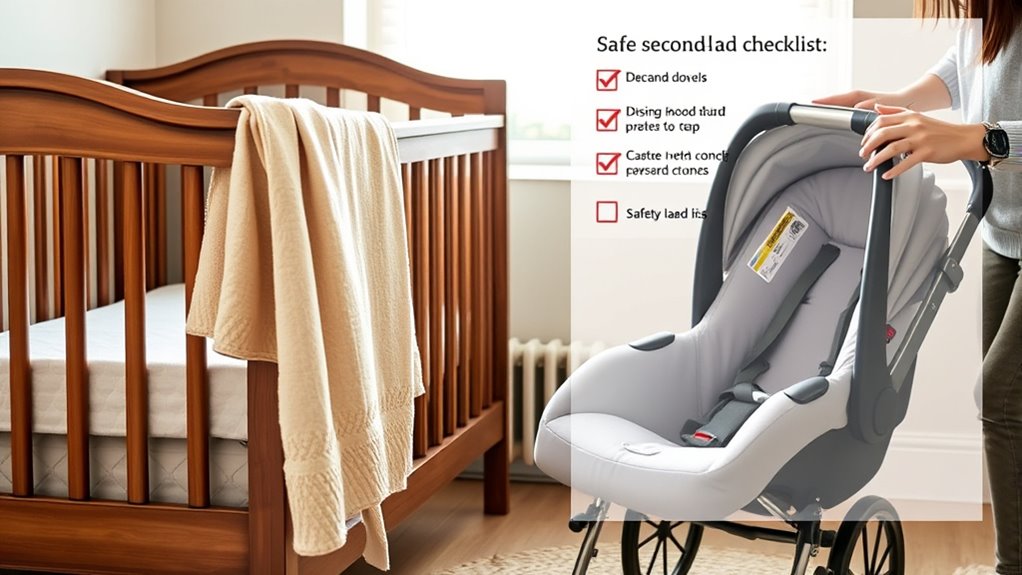
Buying second-hand baby gear can be a smart way to save money and reduce waste, but it’s important to choose items carefully to guarantee safety and quality. When shopping for used gear, you must prioritize safety considerations above all else. Inspect each item thoroughly for visible damage, rust, cracks, or missing parts. For example, check that cribs meet current safety standards, with no slats that are too wide or loose hardware. Car seats require special attention; ensure they haven’t been involved in accidents, and verify that they still comply with the latest safety regulations. Remember, even minor damages can compromise the integrity of the gear, so when in doubt, it’s better to pass on an item.
Always inspect used baby gear thoroughly for damage and safety compliance before purchasing.
Cleaning and sanitizing are essential steps before giving second-hand gear to your baby. Babies have delicate immune systems, so it’s your responsibility to make sure everything is hygienic. Use appropriate cleaning agents and follow manufacturer instructions when possible. For fabric items like strollers or bassinets, vacuum or brush off dust and debris, then wash covers and padding in hot water. Hard plastic surfaces and metal parts should be scrubbed with a disinfectant safe for baby gear, paying close attention to high-touch areas like handles and clasps. Be cautious with items that can’t be thoroughly cleaned or sanitized. If an item looks worn or cannot be properly disinfected, it’s safer to avoid it altogether.
Always check for recalls before purchasing second-hand gear. Manufacturers sometimes recall products due to safety issues, and using a recalled item could put your baby at risk. You can verify this by searching online using the product model number or visiting the manufacturer’s website. If a piece of gear has been recalled, avoid buying it or using it, even if it seems fine. Additionally, understanding safety standards can help you determine whether an item is suitable for your baby’s use and meet current regulations. Keeping up with regulatory updates is essential for ensuring the gear remains safe over time.
In addition, consider the age of the equipment. Baby gear has an expiration date, especially items like car seats and mattresses, which degrade over time. Even if an item appears to be in good shape, it might be outdated or no longer meet current safety standards. Always verify the manufacture date and discard anything past the recommended lifespan. Using self-watering plant pots as a metaphor, ensure all components are still functional and safe for use. Being aware of product lifespan helps prevent potential safety hazards associated with outdated gear. Moreover, consulting expert advice can provide additional peace of mind when selecting used baby items.
Frequently Asked Questions
Are Second-Hand Baby Gear Items Safe for Newborns?
You might wonder if second-hand baby gear is safe for your newborn. It’s important to check material safety and guarantee the items meet current safety standards. Resale regulations vary, so verify that the gear complies with these guidelines and hasn’t been recalled. Always thoroughly clean and inspect items before use. By doing so, you help keep your baby safe while saving money on gently used gear.
How Do I Spot Hidden Damages on Used Baby Gear?
You’ll want to be on high alert—hidden damages can be sneaky! Start with thorough inspection tips, checking for cracks, loose parts, or rust. Use a flashlight to spot any unseen issues, and gently test moving parts for stability. Feel for soft spots or unusual sounds. Remember, even tiny damages can be dangerous, so take your time. Spotting hidden damages helps ensure your baby’s safety with every second-hand gear you choose.
Can I Legally Buy and Sell Second-Hand Baby Equipment?
You can buy and sell second-hand baby equipment, but you need to take into account legal considerations and resale regulations. Check local laws to ensure you’re compliant, especially regarding safety standards and age limits. Some jurisdictions may require safety labels or certifications for resale items. Always verify the legality of the transaction and keep records. Doing so helps protect both you and the buyer, ensuring the gear is safe and legally compliant.
What Should I Do if a Second-Hand Item Is Missing Parts?
If a second-hand item is missing parts, start with inspection tips to assess its safety and completeness. Check with the seller or manufacturer for replacement procedures to obtain missing components. Avoid using the gear until all parts are present and secure. If replacement parts aren’t available, consider finding a different item or repair options. Always prioritize safety to keep your baby protected and ensure the gear functions properly.
How Often Should I Replace Second-Hand Baby Gear for Safety?
You should replace second-hand baby gear when safety inspection reveals damage or wear that can’t be repaired. Check expiration dates on items like car seats and strollers regularly, and follow manufacturer guidelines. If anything looks compromised or outdated, it’s safest to substitute it promptly. Staying vigilant ensures your baby’s safety, as older gear may not meet current safety standards. Regular checks help you keep everything secure and reliable for your little one’s comfort.
Conclusion
In the end, buying second-hand baby gear can be a smart move, but remember to do your homework and check for recalls or damage. Always sanitize thoroughly, just like a good old-fashioned wash in the basin, and trust your instincts. With a little care and common sense, you’ll provide a safe start for your little one without breaking the bank. After all, a well-loved cradle still holds the promise of sweet dreams, no matter its vintage charm.
